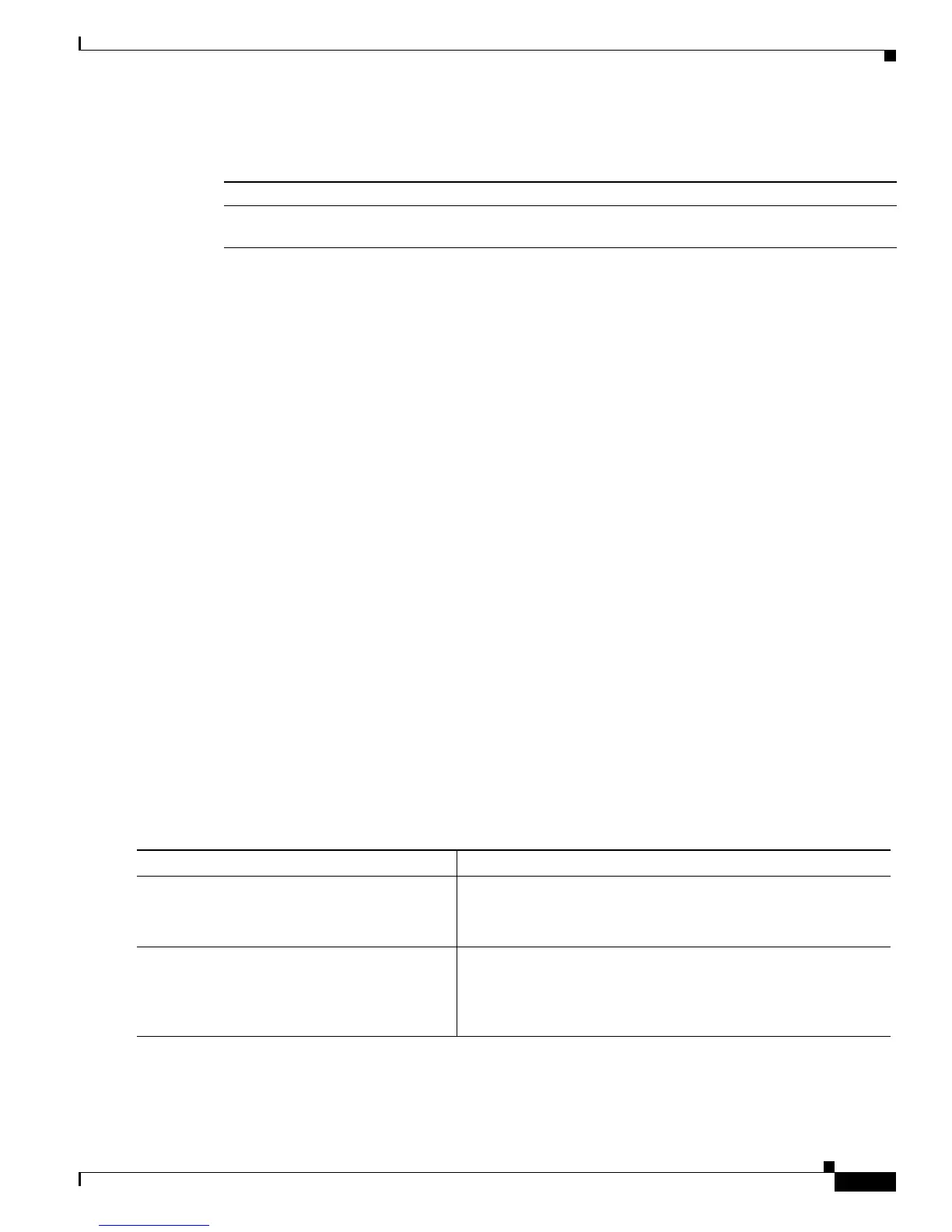18-25
Cisco 10000 Series Router Quality of Service Configuration Guide
OL-7433-09
Chapter 18 Regulating and Shaping Subscriber Traffic
Shaping and Queuing Per-Session Traffic on LNS
Feature History for Per Session Shaping and Queuing on LNS
Prerequisites for Per Session Shaping and Queuing on LNS
• Verify that the PPPoE (or PPPoA) sessions are enabled.
• Verify that L2TP resequencing is disabled.
• This feature uses policy maps in which queuing mechanisms (such as class-based weighted fair
queuing [CBWFQ]) are configured.
Restrictions and Limitations for Per Session Shaping and Queuing on LNS
• Cisco IOS Release 12.2(31)SB8 does not support load balancing when per session shaping and
queuing is configured. However, this release does support load balancing if no output QoS is applied
to the session. Cisco IOS Release 12.2(31)SB6 does not support load balancing at all on the LNS.
• Cisco IOS Release 12.2(31)SB10 supports load balancing for all QoS configurations, except those
containing a queuing action that is applied to a session. For example, the router does not support
load balancing for a session if the policy map applied to the session contains the shape, bandwidth,
or priority command.
• This feature does not support L2TP sequencing.
• This feature only applies when the LAC and LNS are connected by Ethernet and ATM point-to-point
subinterfaces.
Configuring Per Session Shaping and Queuing on LNS
To configure per session shaping and queuing on an LNS policy, enter the following commands
beginning in global configuration mode:
Cisco IOS Release Description Required PRE
Release 12.2(31)SB6 The Per Session Shaping and Queuing on LNS feature was
introduced on the PRE3.
PRE3
Command Purpose
Step 1
Router(config)# policy-map
policy-map-name
Creates or modifies the bottom-level child policy.
policy-map-name is the name of the child policy map. The name
can be a maximum of 40 alphanumeric characters.
Step 2
Router(config-pmap)# class class-map-name
Assigns the traffic class you specify to the policy map. Enters
policy-map class configuration mode.
class-map-name is the name of a previously configured class map
and is the traffic class for which you want to define QoS actions.

